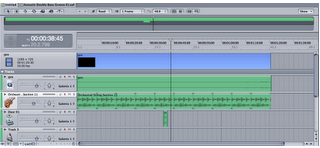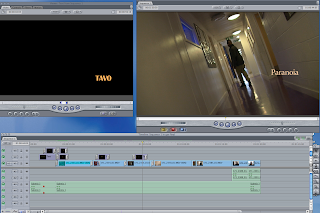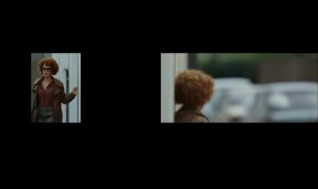There are 4 different types of openings which are discrete, traditional film opening, blank screen and stylized editing.
Discrete: This uses the different images from the film quite randomly with the tittles over the top of the image. This kind of opening is a good way of setting the tone and mood of the film.
An example of a discrete tittle sequence is the opening of "Arlington Drive" (1999)
These pictures are from the "Arlington Drive" opening where we can see how is presenting us the mood of the film and also giving us an idea about where the film will set.
Traditional film opening: Often begins with a establishing shot, that introduce us to the location or setting of the film. The tittles roll over the top of this with both the tittles and the sequence stopping as the action of the film begins.
An example of a traditional film opening is the opening from "Panic Room" (2002). We can see how the opening is establishing the city as the location of the film and how the lettering is emphasis in the fact of the high building in the city.
Credits over a blank screen: The credits appear first and roll over a blank screen. As tittle finish, we then fade into the image of opening sequence, which either introduces location or character.
An example of a blank screen opening is the opening of "Dead Calm" (1989)
In this opening we can see clearly who is involved in the film, presenting their names in a striking way, at the end the main character is presented.In this opening the music play a very important role as there is not image on the screen the music is the technical element that is leading the audience into the film's world preparing them to what they are going to watch.
Stylized Editing: This type of opening has been heavily edited in post-production and is often very visually stylish as a result.
An example of this type of opening is the opening of "Mezrine" (2008)
The split screen represents a hard work in editing making more interesting to see as is giving us more information about the character because has two perspectives to see the character. The opening presents the characters and also is giving a city as location.
The opening that I am going to analyse for "Discrete type" is "Enemy of the state" (1998)
The conventions of this type of opening are clear, the "Enemy of the state" opening is giving us from random pictures the location and setting the mood for the rest of the film. There is not a character presented but as the opening is giving us the sense that they are looking out for the character we expected to see him after on.
The opening I am going to analyse for "blank screen" is "Donnie Darko" (2001)
The tittle sequence in this opening is shorter that usually is for this type of opening. It starts with the blank screen as is expected but after 2 or 3 names a image begins establishing the location and the main character.
The opening that I am going to analyse for "traditional film opening" is "The shining" (1980)
This opening is really successful to introduce the location as the camera moves far away from the subject is. The conventions are clearly visible the names appears while the image is rolling and the opening is presenting the people that have worked in the film while is introducing the location.
The opening that I am going to analyse for "Stylised editing" is "The taking of Pelham 123" (2009)
This opening is based on the visual spectacular, the lettering emphasis in the idea of the trains and the underground whiles is presenting the main characters. Something unusual for this opening is that present the villain and the hero but to differentiate them the music stops when the good guy talks and starts again when the opening continues. The audience start watching the film already knowing who is the good guy, who is the bad guy and what problem is going to be.


















































